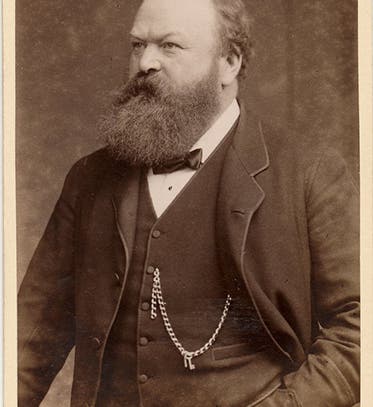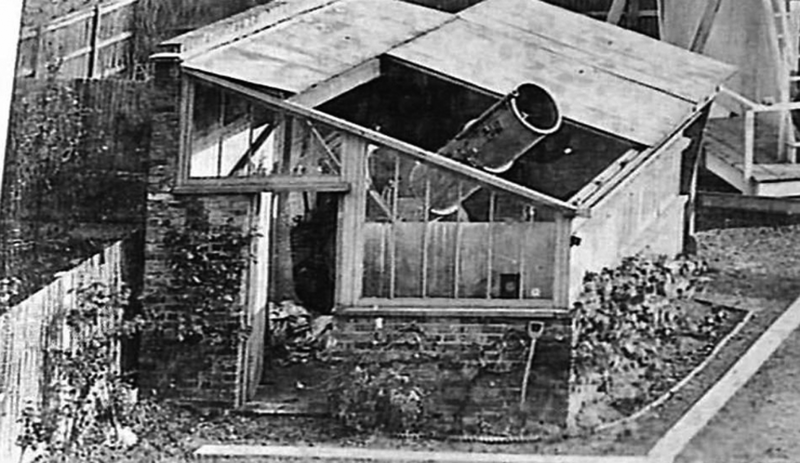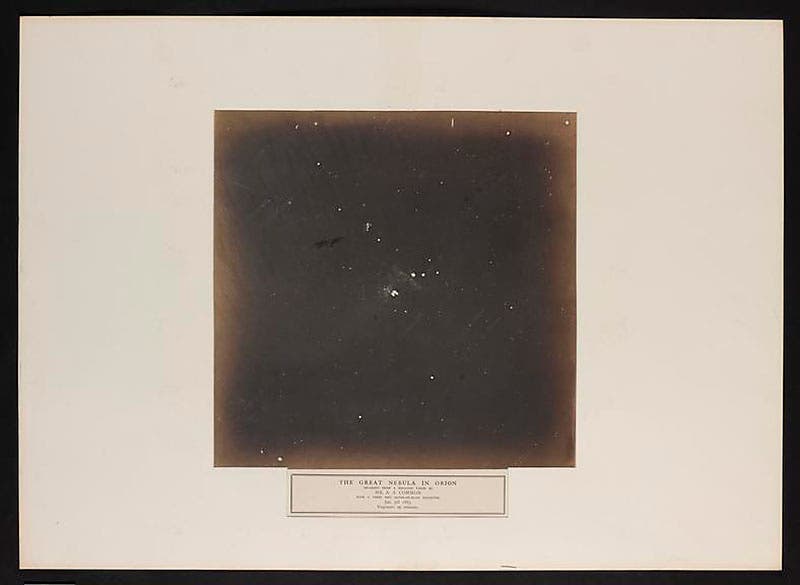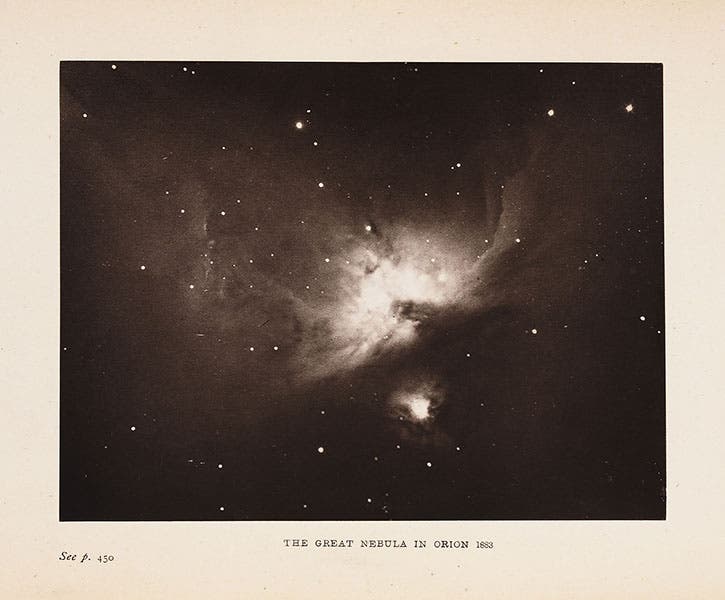Scientist of the Day - Andrew Ainslie Common
Andrew Ainslie Common, a British engineer and amateur astronomer, was born Aug. 7, 1841. Common moved to Ealing, outside London, and erected a private observatory in his garden with an 18-iinch reflecting telescope (second image). In 1879, he ordered a 36-inch reflecting telescope with a silvered-glass mirror; he designed and built the mount himself. He wanted to determine if a large reflector could be used to take photographs of celestial objects. Photography was forty years old at the time, and had been used to record images of the moon and solar eclipses, but photographs were less successful at capturing planets or nebulae, and many astronomers claimed that a photograph would never be able to bring out the detail that was visible to the human eye. It was also thought that refractors were superior to reflectors in celestial photography.
A.A. Common changed all that. In January and February of 1883, he took a series of photographs of the Great Nebula of Orion with his 36-inch reflector. The Science Museum in London has 11 of those photographs, and all are available online. It is fascinating to chronicle Common’s progress and his rapidly increasing photographic skills during those 7 weeks. On Jan. 5, 1883, he took a 2.5-minute exposure of Orion, on which the nebula is barely visible (third image).
Seven weeks later, on Feb. 26, 1883, Common took a 60-minute exposure of the same object with the same instrument, and what a world of difference (fourth image)! For the first time, the wispy details of the Great Nebula were permanently recorded on a photographic plate, providing an image that was more informative, and less subjective, than any of the hundreds of sketches of the Nebula that had previously been made by the human eye and hand. Agnes Clerke, the important chronicler of Victorian astronomy, considered Common’s Orion Nebula photographs to be a discipline-changing event for astronomy. She included the 60-minute exposure as a frontispiece to the second edition of her History of Astronomy during the Nineteenth Century (1887; fifth image), and commented: “Photography may thereby be said to have definitely assumed the office of historiographer to the nebulae.”
Common sold his 36-inch reflector in 1885 to make room for a proposed 60-inch instrument, and the 36-inch was subsequently purchased in 1895 for the Lick Observatory on Mt. Hamilton in California. The mount was rebuilt, retaining Common’s mirror, the telescope was rechristened the Crossley reflector, and it was successfully used for astrographic purposes for many years. Dr. William B. Ashworth, Jr., Consultant for the History of Science, Linda Hall Library and Associate Professor, Department of History, University of Missouri-Kansas City. Comments or corrections are welcome; please direct to ashworthw@umkc.edu.








![Using an astrolabe to measure the depth of a well, woodcut in Elucidatio fabricae vsusq[ue] astrolabii, by Johannes Stöffler, 1513 (Linda Hall Library)](https://assets-us-01.kc-usercontent.com:443/9dd25524-761a-000d-d79f-86a5086d4774/a998eb50-55d2-4a88-ace2-a50aa5fa86e7/Stoffler%201.jpg?w=210&h=210&auto=format&fit=crop)

